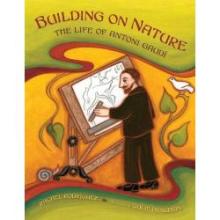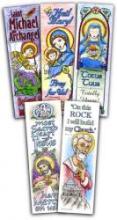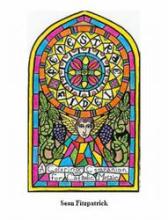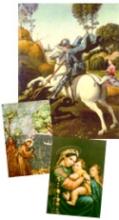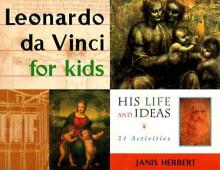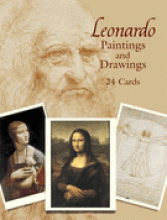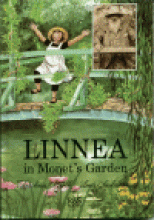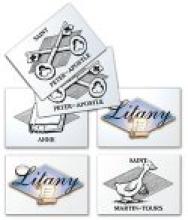Art
Building on Nature
Like most art students and lovers, I have had mixed feelings about the architecture of Gaudi all my life. When our oldes son visited Barcelona and sent pictures of Gaudi buildings, I planned on learning more about him. Now I find this new and remarkable picture book telling children about a man who was perhaps little understood during his lifetime.
What I find in the warmly-illustrated pages is a likeable man! A devout Catholic, a lover of nature and of poverty, married to his life's hard work. Perhaps his art isn't traditional, in any shape or form, but there is a genuine aspect of Gaudi's work that one can't help being attracted to.
This picture book does a good job of bringing his life and work to young children and it is a fun read aloud, written in the present tense, in poetic lines. The author's note adds important biographical information including the fact that he was a very early recycler, using all sort of discarded materials in his buildings. A list of websites is also listed. I found this list of buildings with photos very useful!
Catholic Bookmark Kit from Illuminated Ink
City: A Story of Roman Planning and Construction
Various editions available
Fenestrae Fidei
Learning to Appreciate Art
Used with the Catholic Heritage Curricula Fourth Grade Lesson Plans
This lovely, well-written art resource offers an excellent introduction to composition, perspective and form; various kinds of art (mosaic, fresco, sculpture, etc.); a brief history of early art (including cave paintings, Egyptian and Greek art); and a detailed account of a number of major artists of the Renaissance and pre-Renaissance (Giotto, Fra Angelico, Botticelli, Leonardo da Vinci, Michelangelo and Raphael). Through art reproductions, simple line drawings and engaging text, the child will be drawn into a surprisingly in-depth way of looking at a work of art. I was especially impressed by the "Appreciating Art" segments that follow the works of some of the artists. These give step-by-step ideas, questions and hints to get more out of each picture and learn to appreciate the strengths and uniquenesses of each artist.
The individual art reproductions - representing the Master artists listed above as well as examples of different historical periods and types of art, are intended to be placed in the book by the student (there is a miniature black and white reproduction of each piece so the task is quite easy to do). This type of active involvement helps a child to take the material "for their very own" in a way that simply reading and looking at a book doesn't always accomplish. The Catholic material is interesting and well-connected to the subject - especially in a world where most children's art materials are devoid of religious or even classical subjects.
What our family did was to move this appendix into its own binder. We laminated the art reproductions and keep them in the back of the binder to allow our children to match them up with the appropriate spot over and over again (a Montessori sort of thing to do). It also allows older and younger siblings to enjoy this resource. This is a really lovely resource - one of the nicest materials I've come across in awhile. I learned some new things from the text too. Do you know why Leonardo da Vinci's Last Supper was so faded in comparison with other works from the same general time period (like the Sistine Chapel)? Or why the very famous pair of thoughtful angel cherubs were placed at the bottom of the Sistine Madonna by Raphael? Well, I won't tell you, but you'll find these and lots of other interesting tidbits in this very nice and highly recommended text.
Leonardo da Vinci for Kids: His Life and Ideas
Leonardo da Vinci has long been considered the paradigm "Renaissance Man". Through this book, he offers children a great example of enthusiastic love of life and learning. Readers will come away with a greater perspective on and respect for many important ideas: the importance and joy of learning, early advancements in science, general concepts of art and how to appreciate it, basic scientific concepts, ideas for using the imagination and memory, concepts in math relating to science, Renaissance life and much more.
I was impressed with the care the author took in relating so many interesting ideas in an accessible and engaging manner. I found difficult concepts handled graciously and respectfully - particularly for the intended age level. For example, the reader will learn that da Vinci's parents were never married and that this had consequences on his career choices. We learn that da Vinci dissected dead bodies at the morgue for the sake of artistic and scientific learning. At one point the Pope prohibits him from continuing this mode of study. Instead of being judgemental about these sorts of issues or dwelling on them inappropriately, they are explained in clear, simple terms as relevant parts of the story, but without any extra nonsense.
This would make an excellent "spine" text for a study of the Renaissance. In addition to the text and side bars, there are 21 activities relating in various ways to da Vinci's life. They span a wide range: baking, drawing, math, science, painting, observing, language and more. The book is best for independent reading in 6th grade and up. It could be read-aloud to younger children. Most of the activities are suitable for any school-age children.
Enthusiastically recommended!
Donated for review by Chicago Review Press
Leonardo Paintings and Drawings: 24 Cards
24 Postcards in perforated book
Most homeschoolers are familiar with the Montessori-style idea of having children learn to enjoy and appreciate great paintings by studying small post-card size reproductions (especially as promoted by Aline Wolf in Mommy It's a Renoir). This is a very nice program, as I understand it, but I've been frustrated with the lack of beautiful painting collections in postcard size. You can find them here and there at museums, but they have been very difficult to purchase on the web or from catalog. Dover Publications is beginning to fill that gap with some beautiful postcard collections, but Leonardo is my favorite so far.
The set includes 13 reproductions of paintings: Madonna with the Carnation (1475), The Virgin and Child with St. Anne (1508), Bacchus (circa 1513), Portrait of Ginerva de'Benci (circa 1478), The Last Supper - detail (1495-1497), The Benois Madonna (circa 1478), The Annunciation - detail (circa 1472), St. John the Baptist (circa 1513-1516), Portrait of Cecilia Gallerani a.k.a. Lady with an Ermine (circa 1490), Madonna of the Yarnwinder (1501), Madonna Litta (circa 1490), Mona Lisa (1503-1506), and Portrait of a Musician (circa 1490).
There are 11 beautiful drawings as well: The Virgin and Child with St. Anne, Profile of a Young Woman, Antique Warrior, Self-Portrait, Five Grotesque Heads, The Virgin of the Rocks, Vitruvian Man, Study for the Last Supper and Architectural Sketches, Old Man and Youth, Study for the Battle of Anghiari and Feminine Headdress.
This is a great and inexpensive way to introduce children to really great art. Also would make a nice supplement to Leonardo da Vinci for Kids.
Linnea in Monet's Garden
This book is a clever way to introduce children to the works and life of Claude Monet and help them to start appreciating the works of the Impressionists. "Linnea" is a little girl with a love for art and flowers who travels with her friend and neighbor Mr. Bloom (a retired gardener) to France to visit the restored estate of Claude Monet and the museums displaying his art. Besides the illustrations of this story, there are reproductions of some of Monet's paintings, old photographs of him and his family, and photographs of what his estate looks like today. Linnea helps to explain the idea of imporessionism and share her enthusiasm - especially of standing on the Japanese bridge. The book also includes a brief biography, a timeline and Monet Family Tree as well as information about other books on Monet and the Museums and other attractions visited by Linnea in the story. I'm waiting for them to write "Linnea in the Louvre" and "Linnea visits the Sistine Chapel"! : )

